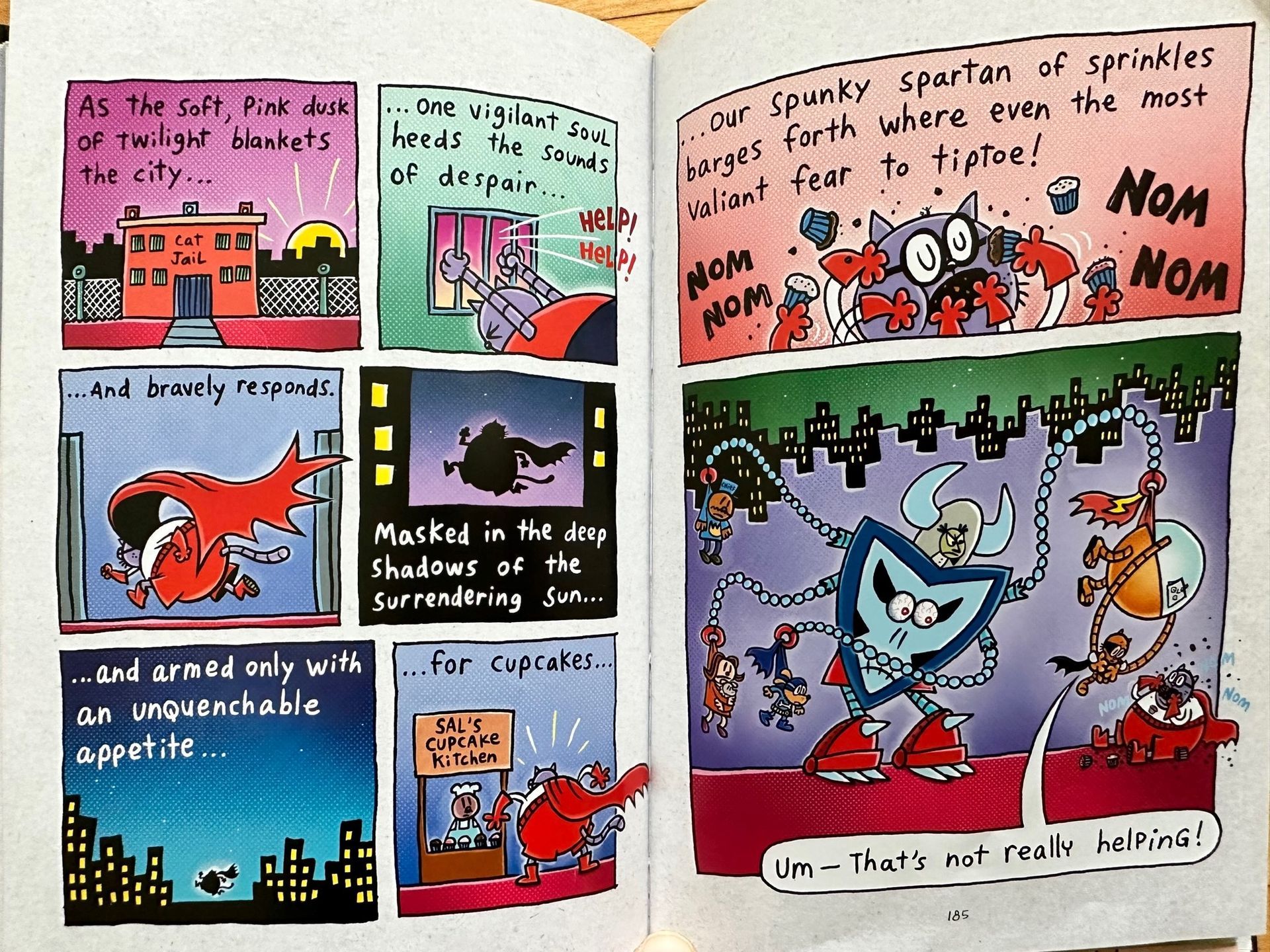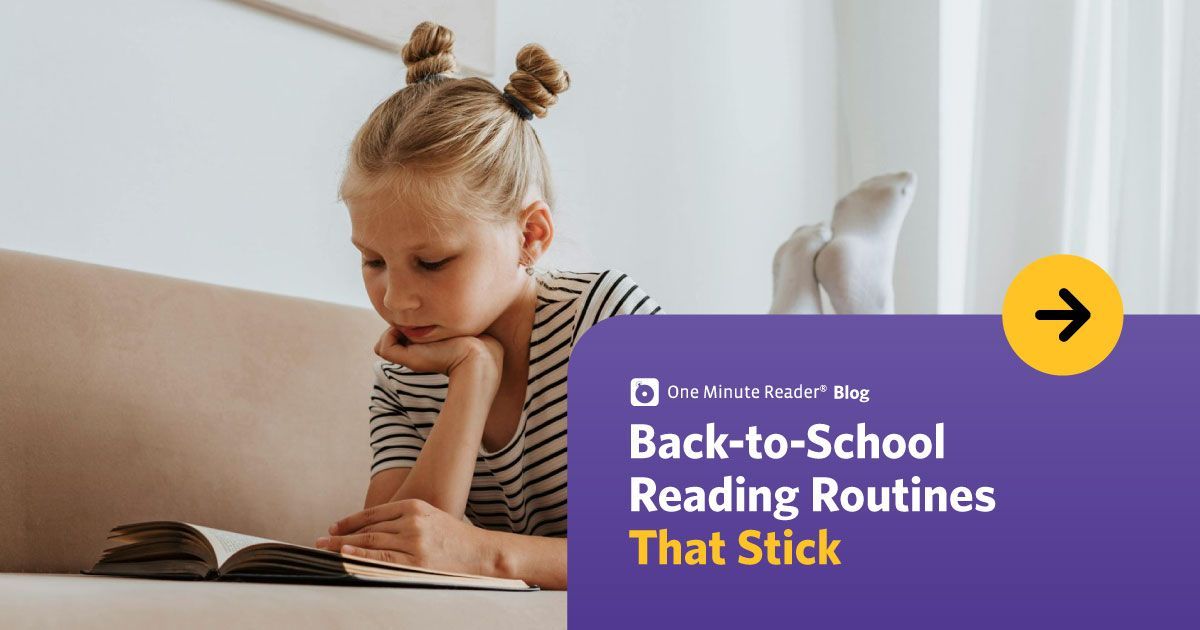Blog
Yes, Graphic Novels Are Just Fine!
If there’s one book series my second grader is crazy about, it’s Dog Man. You might know a kid or two who shares this obsession. The books are graphic novels in which bathroom humor, slime fights, and a time-traveling hot dog stand feature prominently.
How do I feel about my son’s literature choices? Initially, I’ll admit, I struggled. There are plenty of books at his level that don’t dedicate multiple pages to the topic of dog poop. And my son has finally reached the point of being able to read chapter books. Wouldn’t it be more worthwhile for him to challenge himself with those?
Thankfully, I didn’t struggle with this for too long. When I started paying attention, I noticed a few things. First, the Dog Man books make my son laugh out loud. This is a clear sign that not only is he enjoying himself, but he’s comprehending the text. Second, he frequently brings me the books and asks what certain words mean. They’re usually sophisticated, difficult-to-decode words. For example, a robotic cat villain describes himself as “deplorable, contemptible, ignominious, despicable, loathsome, and detestable.” In just one sentence of text, my son attempted several new vocabulary words and deepened his understanding of synonyms. He was motivated to learn all those words because he wanted to fully understand the plot. Finally, and most importantly, the Dog Man books keep my son reading. He stays engaged for long stretches of time, building his reading stamina. Every time he picks up one of these books, he integrates the idea that reading is interesting and enjoyable, and he wants to keep doing it.
How do graphic novels full of weird pictures and potty talk manage to do all of those things? The Dog Man books themselves actually are entertaining, but the biggest contributor here is the fact that my son chooses to read them. Good readers read with the expectation that they will learn or enjoy something. When kids have opportunities to choose what they want to read (as opposed to being told what to read), they’re invested in the process from the beginning. They tend to use their time wisely, and they learn more quickly how rewarding reading can be. It doesn’t really matter which books help them learn this. The important thing is that they learn it.
Now, are graphic novels alone going to teach kids how to read? Probably not. High-quality reading instruction teaches kids how to read. Books like Dog Man—or whichever books they can’t get enough of—teach them why to read.
Reading enjoyment and effective instruction are not mutually exclusive, however. Ideally, a reading program will incorporate the power of self-selection and high-interest material to keep kids engaged and motivated. One Minute Reader is a program that uses research-based strategies to teach fluency, vocabulary, and comprehension. Kids develop these skills by reading interesting nonfiction stories at their level. The first step in the process is that they get to choose which story to read. Parents often report that even the most reluctant readers become captivated learners when using One Minute Reader. Self-selected, interesting stories are among the main reasons why.
So, if kids are getting high-quality reading instruction and want to read graphic novels on their own, that’s just fine. The important thing is that they’re reading, comprehending, and enjoying. Often, these books serve as a bridge to more advanced reading material anyway. After my son had read each of the Dog Man books cover to cover about 10 times, he picked up another book by the same author—this time, a chapter book. The book is Captain Underpants, and the plot is about evil talking toilets trying to take over the world. I wonder what’s next.

Highlighted Posts
Ready to see an improvement in your child's reading?
Sign up today and get seven days for FREE.
One Minute Reader is just $8 per month after your free trial.


